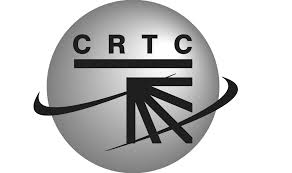The CRTC Announces Its Simplified Approach to Tangible Benefits
On Friday September 5 2014, the Canadian Radio-television and Telecommunications Commission (CRTC) announced that it's review of the tangible benefits system (as announced by Broadcasting Notice of Consultation 2013-558) was completed. As a result, Broadcasting Regulatory Policy 2014-459 was released, entitled "Simplified approach to tangible benefits and determining the value of the transaction".
In case you need a refresher, CIMA submitted two interventions for this particular consultation; an initial filing of comments in December 2013 that can be viewed as a PDF here and a second intervention that contained responses to the comments provided by other intervenors that you can download here.
CIMA's Position
1. Maintain the current tangible benefits policy
In its submissions, CIMA had argued that the CRTC should maintain its current tangible benefit policy, as they are the largest source of Canadian Content Development funding, directly providing financial support for independent music production. We went on to suggest that the tangible benefits policy directly contributes to the stated objectives of the Broadcasting Act, where it is explicitly stated that the Canadian radio and television sectors must "contain a significant contribution from the Canadian independent production sector."
2. Do not increase the "discretionary" funding allocation for radio broadcasters
In the interests of transparency and accountability, CIMA had argued against proposals to increase the "discretionary" component of tangible benefit contributions. Most arguments in favour in increased discretionary spending were intended in order to increase local spending, which can also be done by allocating increased funding to national and provincial music industry associations rather than an increased allocation to discretionary funding.
3. Increased greater transparency measures
Like many other participants, CIMA argued in favour of additional transparency and accountability measures, particularly for discretionary funding.
4. Regulate online radio broadcasts
CIMA strongly believes that the Commission should begin counting the value of online radio when calculating the overall value of an ownership transaction.
What does the Commission's simplified approach entail?
The Commission's simplified approach, as it pertains to the radio broadcasting sector, is to essentially maintain status quo.
- The Commission decided to maintain its current tangible benefits policy, including the funding allocation percentages. This is consistent with CIMA's position, as articulated above.
- Essentially, the CRTC felt that the tangible benefits policy is meeting its goal of “yielding meaningful and complementary benefits to the radio broadcasting system”.
- The CRTC goes on to indicate that it believes that the 4 funds (Radio Starmarker, Fonds Radiostar, FACTOR and MUSICACTION) are well-financed and have the necessary resources to fulfill their mandates with currently available funding. Furthermore, the projected tangible benefits from recent ownership transactions ensure that they will be well-financed for “the forseeable future” (note – their data projections include date until the 2017-2018 broadcast years).
Well, there is one small change to keep in mind...
While the substance of the tangible benefits policy will remain the same, the Commission did in fact make a small change with regards to the exemptions on this policy.
Previously, the Commission awarded exemptions to the obligation to provide tangible benefits in certain cases; normally, these would involve situations like unprofitable radio stations, or television stations with revenues of less than $10 million. In these cases, exemptions were granted, eliminating the need to pay into the tangible benefits framework.
- In 2014-459, the CRTC is arguing that these exemptions are no longer "efficient or effective mechanisms" to ensure that the public interest is accounted for, and subsequently eliminated the exemptions.
- In its place, the CRTC is allowing applicants who want an exemption to apply for one, and the onus is now on the applicant to prove that an exemption would be in the public interest.
- They would also need to meet 3 specific conditions to qualify:
- The undertaking cannot be in its first licence term.
- The undertaking has to have suffered financial losses over an extended period of time.
- And finally, the purchaser needs to be able to provide evidence that the exemption would benefit either the public broadcasting system as a whole or the community that the broadcasting undertaking serves.
For more information, please consult the policy here: http://www.crtc.gc.ca/eng/archive/2014/2014-459.htm


